When you go to a museum, do you ever notice the frames on the art pieces? Most of them are chosen carefully so that they complement the style of artwork. You’re likely to see grand paintings enclosed in sophisticated, gold-accented wood while the basic paintings are framed in old barn wood.
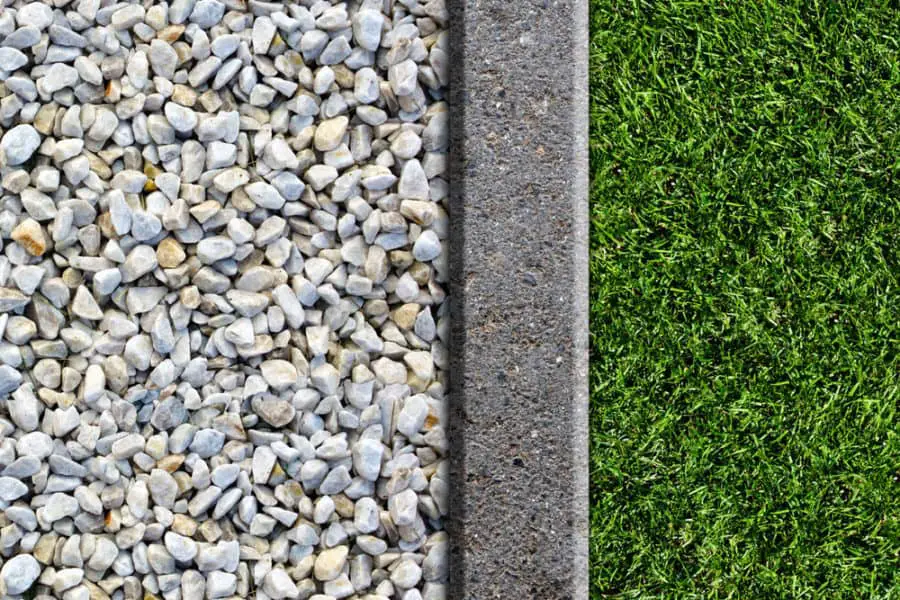
A landscape is no different. Adding a lawn edging or border helps to complement the elements of the landscape. Often, this border means the difference between the backyard looking messy or professionally groomed. In this article, we’ll explore some of the best landscape border ideas.
The key to an effective landscape border is choosing one that complements what it is framing, and raises the appearance of your outdoor space as a whole. As with most of these choices, it ultimately comes down to your personal preferences. In this article, we’ll cover many unique landscape border choices to help you decide on the one that creates the perfect space for you.
Table of Contents
Types of Landscape Borders
A landscape border is an excellent way of defining lawn edges. It creates a distinct barrier between the lawn and other elements of the landscape.
When installing a landscape border, you can choose from a variety of materials. The material you pick mainly depends on your style and needs. While some materials will make the border look natural, others will make it look simulated.
It might make your decision easier if you first decide on the style of border you want, and then narrow your choice to the type of materials. There are so many choices that it might become easy to be overwhelmed, but narrowing down your choices will help you decide on a creative lawn that also matches your preferences.
Another factor that you should consider when selecting the landscape border is the style of your home. Remember that this border should complement the look of your home and the surrounding landscape. There are two main kinds of landscape borders to pick from:
Natural Landscape Border Ideas
If you want your landscape to have a natural look, then there are certain materials you should use. These include elements like plants, piled rocks, wood or mulch. These edging materials look less formal, and they blend perfectly with the existing landscape. The good thing about natural landscape borders is they offer the opportunity to get as creative as you want. You can even go exploring and find these materials yourself.
- Plants – A landscape border made of plants is one of the most widely used. You can choose ground covers, flowers, small shrubs or ornamental grasses. A great choice for keeping your outdoor space natural. Read more about using edging plants as a landscape border here.
- Rocks – Rocks are also a popular option for a landscape border. This is because they come in a range of styles and are great for creating small retaining walls for kitchen gardens, ponds and other sections of the lawn. They are functional, easy to set-up, and their muted tone will likely match any garden. You can learn more about different types of rocks to use for the edge of a pond.
- Mulch- If you don’t want to use plants or rocks, mulch is another material that will give your landscape border a natural feel, and the good thing is that it’s readily available, relatively inexpensive, and easy to set-up. All you need to do is strip grass from the outer edges of your flower beds or walkways and fill these sections with mulch.
- Wood – A wooden landscape border differs in style. Depending on the type of wood you choose, your landscape edging could look natural or simulated. Your options with wood are quite vast, and gives you the opportunity to be creative.
When it comes to wood, you can decide to use treated or untreated wood. Each of these has its fair share of setbacks. For instance, treated wood is not good for plants or beneficial insects.
On the other hand, untreated wood deteriorates much faster than the treated type; thus it requires frequent replacement. However, the untreated wood is not harmful to the environment and it enriches the soil.
Simulated Landscape Border Ideas
A simulated landscape border differs from a natural one in that it consists of preformed materials. These include items like metal, landscaping bricks, and plastic. You can typically find these items at a local hardware store, but many are also sold online if you have trouble finding them.
- Metal – If you’re thinking of using a metallic border, we recommend going for aluminum or steel, which are pliable; thus easy to work with. Even though this landscape border won’t have a natural look, it’s going to last for a very long time. If durability is your goal, metal is a great choice.
- Plastic – Another material that’s commonly used in making landscape borders is plastic, particularly vinyl. The good thing about plastic edging is that it exudes formality and has a clean and crisp look. It’s also easy to install on your own. You can learn how to install a plastic edging here. On the downside, plastic is susceptible to cracking, which means it’s not the most durable.
- Brick – Like plastic, brick landscape border also offers formality. Plus, they’re available in a range of styles, making them suitable for creating patterns. Another advantage of using brick or concrete is that these materials are resilient; hence, they can be used in many settings. Brick is easy to find, comes in multiple styles, and is relatively simple to set up.
Ideas for Your Landscape Border
Spade-Cut Edging:
We’re going to go with the simplest option first. It is almost certainly the easiest and most inexpensive edging option available to you. To make a spade-cut landscape border, simply take a spade, and dig a trench surrounding your garden. It is an easy, low cost option, and also gives you a nice, consistent border surrounding your garden. Now, let’s move onto the more exciting options.
Flower Bed Edging:
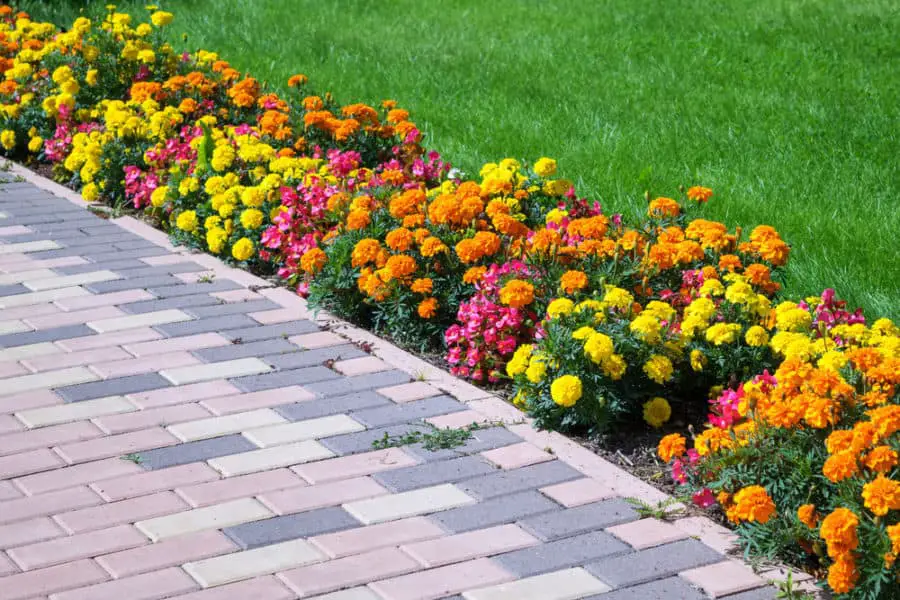
One of the easiest ways to border your landscape is to arrange a flowerbed of different colors along the edge of your yard. Such a border makes the yard look spectacular. An advantage of flower bed edging is that you can truly let your imagination run wild. Flowers come in so many shapes, colors, and styles that you can be sure your landscape border will be unique.
Colorful Flowers Border:
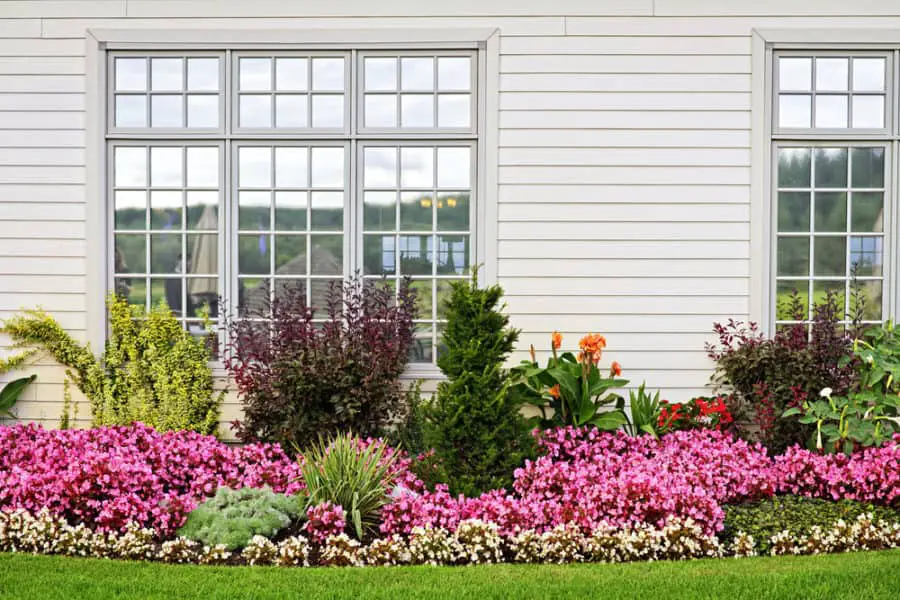
You can surround your home with a variety of flowers. Although they look simple, this border made up of flowers is bound to draw the attention of everyone passing by. The edging landscape you choose can be fully customized when you decide to use flowers, and you will find that the options for creativity are numerous.
Plastic Edging:
Another simple, back-to-basics edging style. Plastic edging is a very easy, low-key way to surround your garden and make a clearly defined border. Plastic edging is easy to purchase and set-up. It typically comes in lengths around 25 feet, and even up to 60. It is flexible, and contains anchors so that it will stay in the ground. You simply dig a trench, place anchors in the ground, and dig stakes into the anchors. Easy-to-install, and will not distract if you want your garden to be the primary focus.
Steel Edging:
Very similar to the plastic option. Steel edging can create a simple, clean border surrounding your garden. It is sold in strips and installed in a similar way to plastic edging. It is not as flexible, but still capable of bending to create smooth borders. It is also more expensive than the plastic options. People who choose steel over plastic tend to like the look of it more, and it also is more durable.
Black Brick Landscape Border:
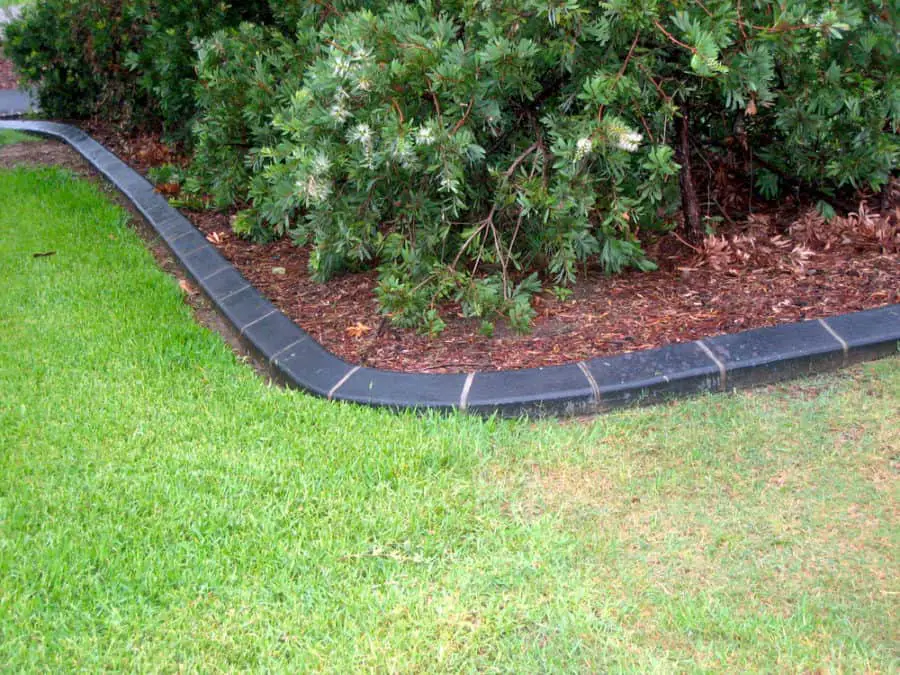
A border made of black landscaping bricks makes your landscape look classic. We like how the brick surface maintains a low profile, shifting people’s focus to the beautiful lawn and flowering plants. Although it looks stunning, installing a brick border is a little complex and requires masonry skills, especially when it comes to making those curves. While this option may require you to hire a professional, it might be a great investment due to its long-term durability.
Brick Landscape Border:
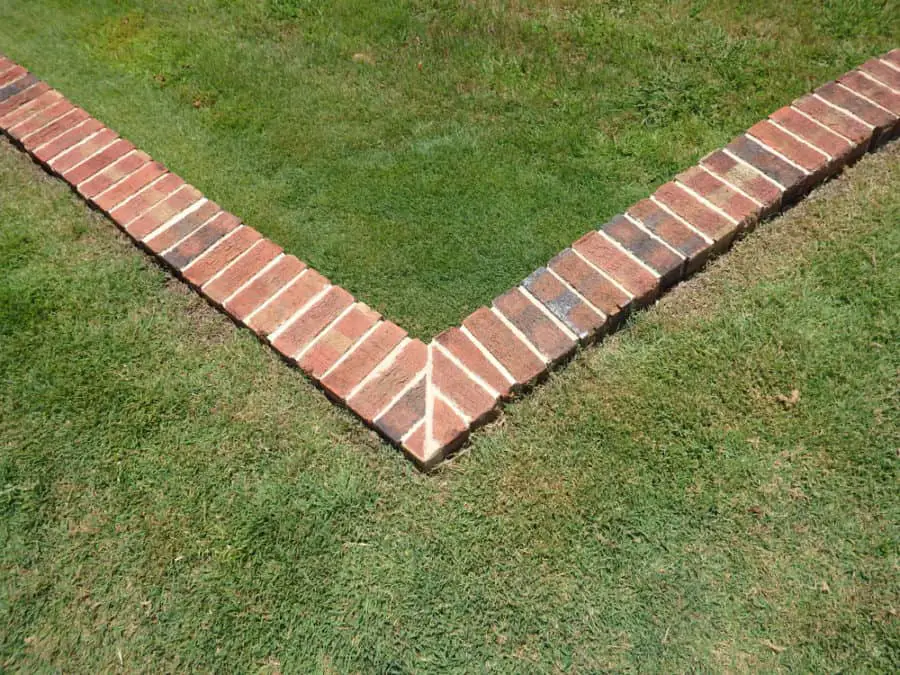
This is another example of brick being used as a landscape border. The brick border helps to keep the lawn edges intact while also providing a crisp finish. Keep in mind though that bricks look weathered over time. However, the overall look depends on how well the lawn is maintained. Bricks are a great option as a low-key landscape border if you want to keep all of the attention on your garden itself.
Turned Brick Edge Border:
If you are looking for a simple twist on the traditional brick border. Try turning the bricks diagonally and placing them on their sides, in a border around your garden. This creates a unique, jagged wall surrounding your flowers. This is a unique border that will surely draw more attention to your landscape border if that is what you are going for.
Small Stone Landscape Border:
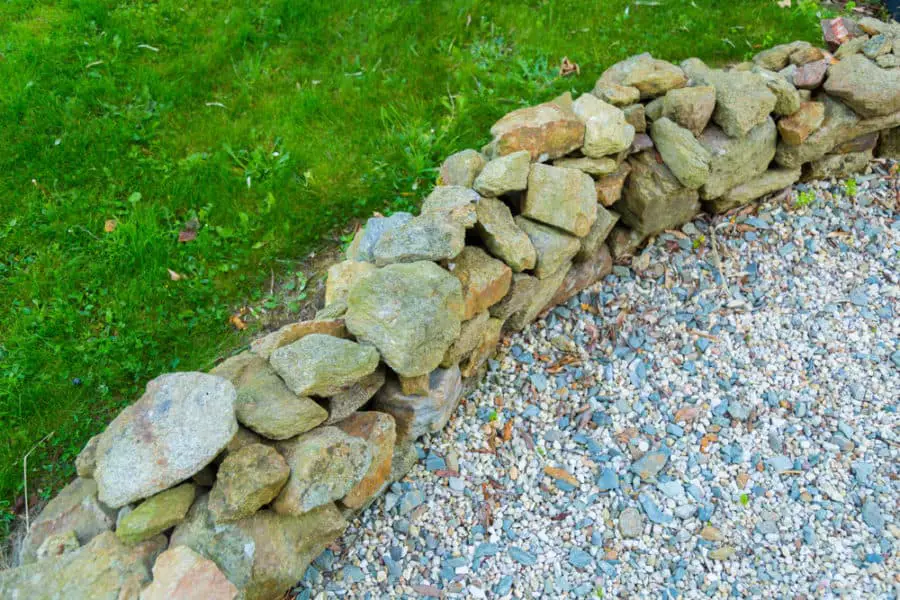
If you’d like a natural-looking border, then using locally sourced stones is your best bet. If you have stones in your yard, all you need to do is to dig them up from one area then use them to create a border. However, placing the individual stones can take up a lot of time. Stone landscape edging is great because it is relatively low-cost, although it may be a pain to install.
Wattle Landscape Border:
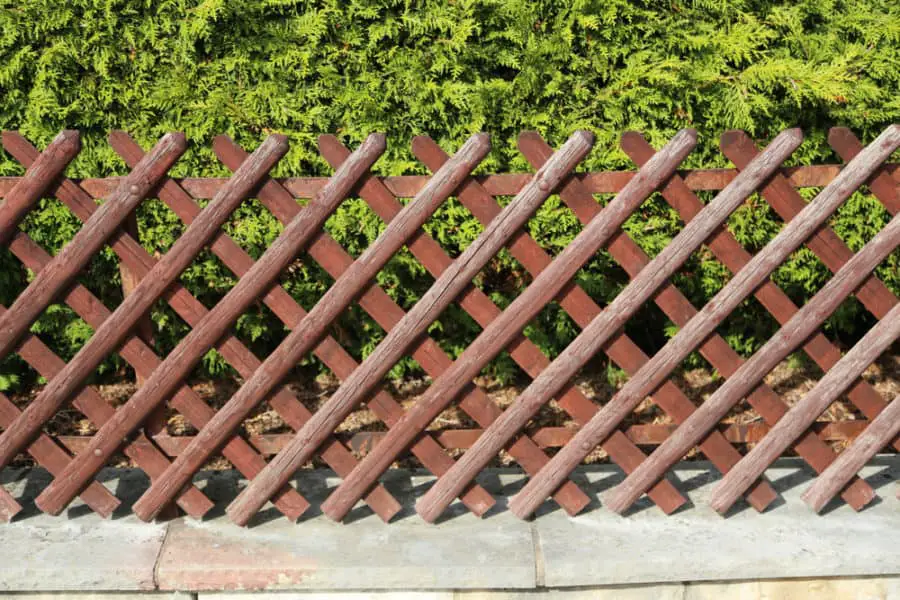
This wattle fence makes an exceptional border for a garden or lawn. It’s made by weaving material in and out of posts. If you’re on a shoestring budget, this wattle border is one of the cheapest options. It doesn’t require advanced carpentry skills to put together, and still maintains that traditional look. This is a great, low-cost example of fence edging for your garden.
Concrete Landscape Border:
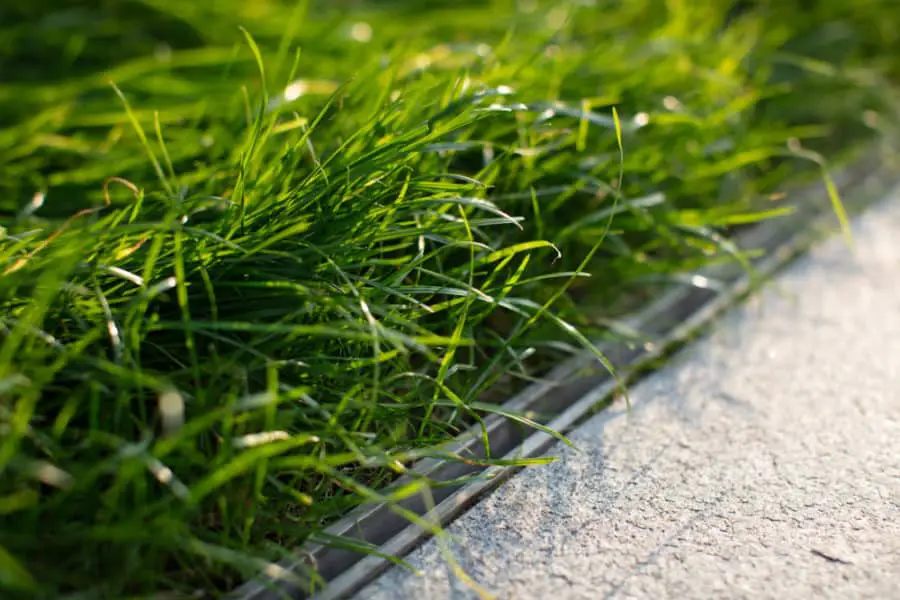
This lawn is surrounded by a concrete-made border. The benefit of using concrete is that it’s fluid- at least in the installation phase. You can mold it into any shape you want. What’s more, you can structure it to your preferred height. Although the concrete border in this picture is small, you can create one that goes deeper into the ground or one that is raised as high as you want.
Concrete Pink Wall:
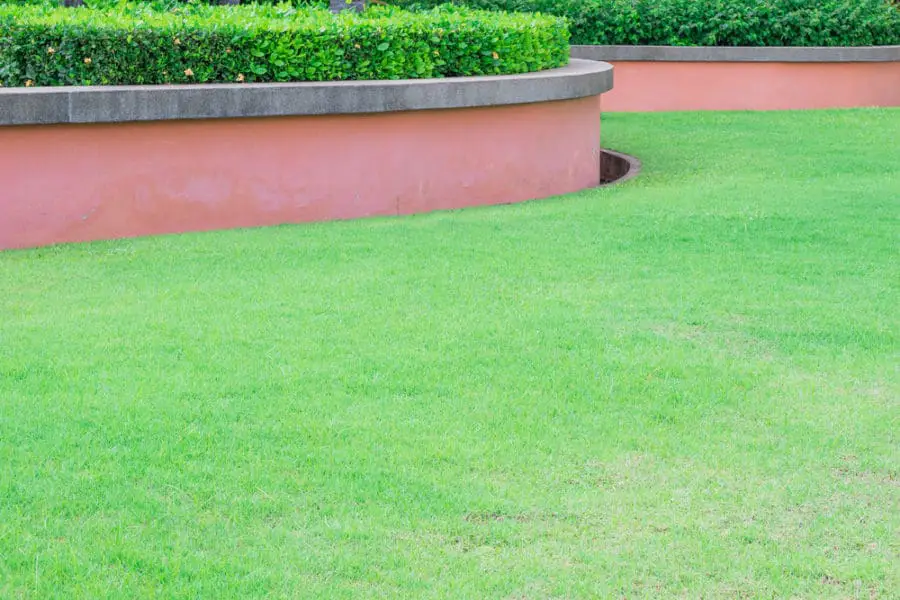
This is a good example of a concrete border that extends upwards. It makes the lawn look neat and it’s more durable than the traditional plastic edging, which could easily get damaged while mowing your lawn.
Green Hedge Border:
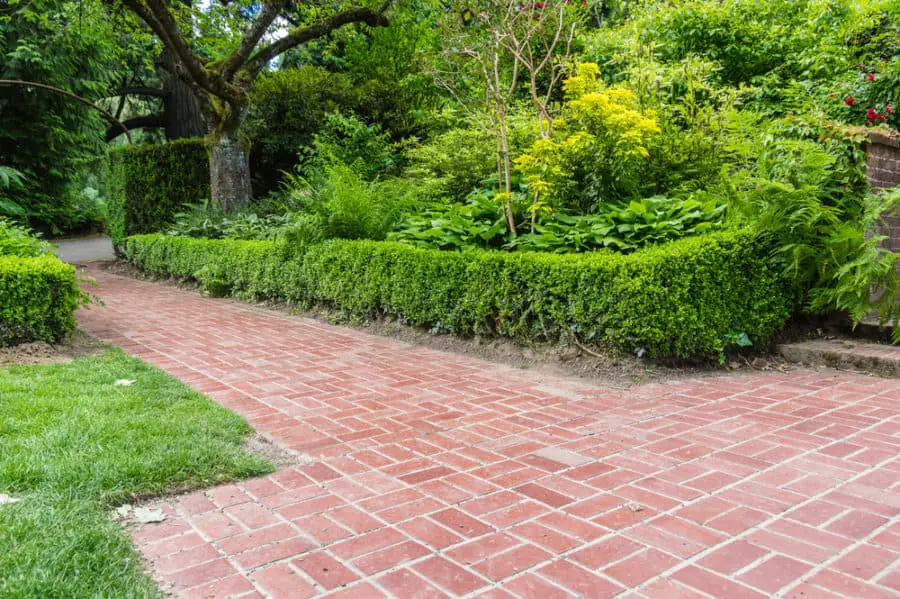
Planting a hedge is a great way to put a border around your landscape. One of the best things about a hedge border is that it creates privacy. Furthermore, the hedge serves as a windbreak; thus protecting your plants, and depending on the plants you use for the hedge, you might even be able to keep pests and intruders out. A hedge is a relatively low maintenance landscape border when it comes to plant borders, and it gives your garden a very natural feel.
Foliage Landscape Border:
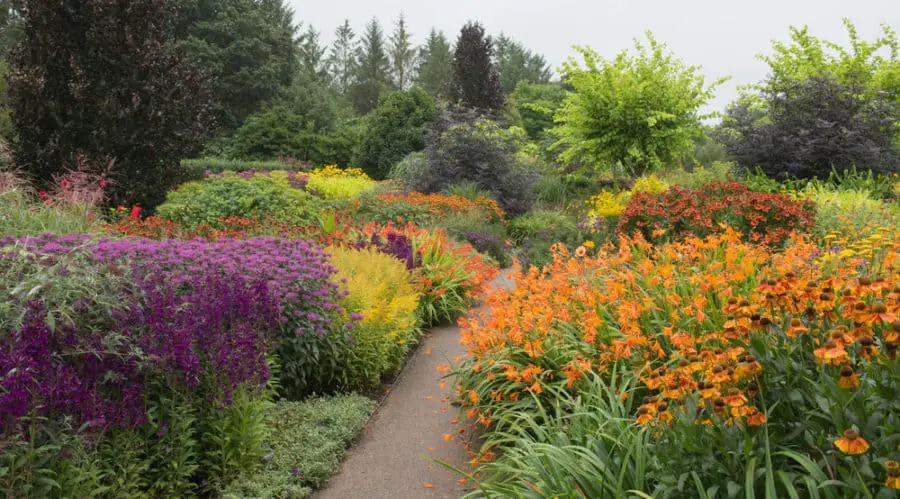
This border consists of a variety of herbs such as monarda, crocosmia, and coneflowers. If you’re looking for an option that will give your yard a dramatic effect, you can’t do better than this foliage border. The secret is to pick the right plants or shrubs, whose leaves and branches have contrasting colors, textures, shapes, and sizes. This is a bold landscape border, but sometimes that might be exactly what you are looking for.
Ornamental Grass Border:
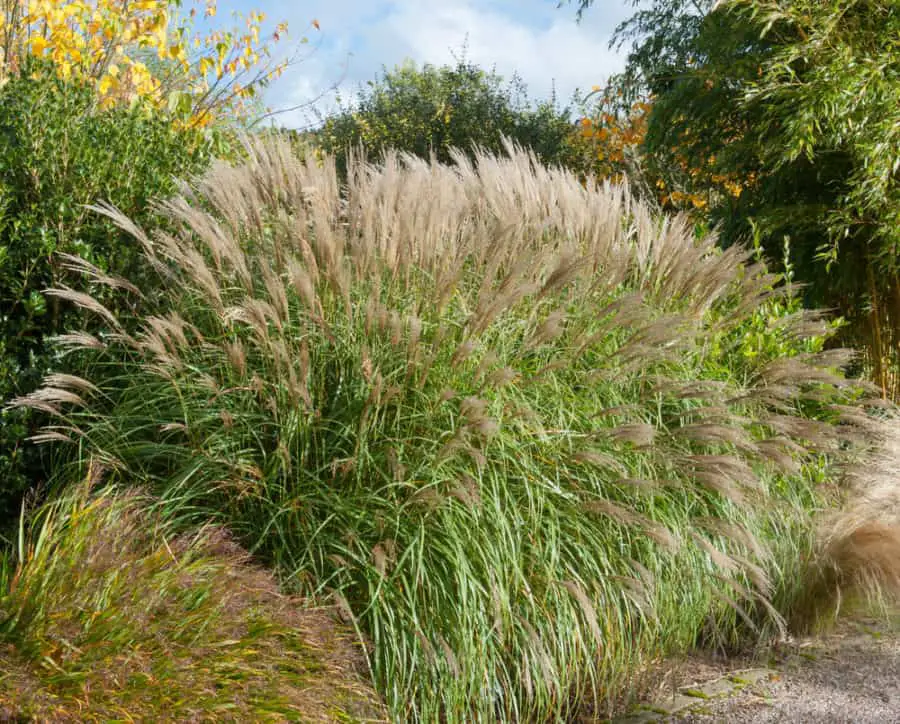
Using grass for your border adds a bit of light, motion and even sound to your landscape. More importantly, ornamental grasses look like graceful threads that blend all other plants in your yard, making them look like a family as opposed to a convention of strangers. While ornamental grass certainly draws the eye, it also gives your garden a “deep in nature” feel while staying relatively easy to maintain.
Wooden Planks Border:
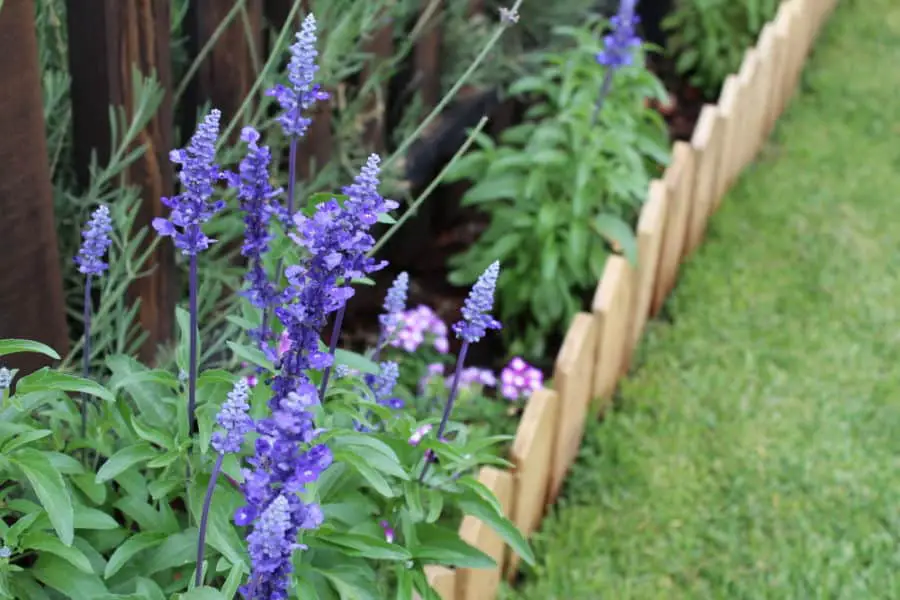
These wooden blocks are inexpensive and they make a beautiful border around a landscape. You can add some color to some of the planks to create a stunning border or to give it a contemporary touch. This border is easy to buy and set up, which makes it one of the more appealing options in fence edging.
Metal Fence:
Similar to the wood fence above, a metal fence is a great, easy to install option that adds a touch of sophistication to your garden. Metal fence landscape borders are sold in a variety of styles, colors, and designs. They are simple to set up, as they often just require sticking them into the ground. Depending on what you choose, this might be a rather expensive option, but the benefits of installation might be hard to pass up.
Recycled Rubber Mulch Border:
One of the more unique options on our list. This type of border is made of recycled rubber, and looks almost exactly like mulch. It comes in a roll, and you simply dig and place to create a permanent “mulch” border around your plants. An interesting option for sure, and it definitely saves you the trouble of having to re-mulch every year. As a bonus, it is thick and prevents weeds from growing through it.
Bender Board:
Bender boards are neat landscape border options that essentially look like a piece of wood, but are flexible and capable of bending to create a curved border surrounding your plants. It might be the easiest way to create a rounded, wooden, raised border. The one downside to a bender board is that it is actually quite expensive. However, if you are willing to make the investment and don’t want to deal with the hassle of building a curved wooden border from scratch, then this might be the solution you need.
Landscape Timbers:
Landscape timbers are long pieces of timber that are specially designed and shaped for landscape borders. Timber edging is a simple way to outline a garden using a straight piece of wood. Timber helps to frame your garden without drawing the eye too much. The timber is also generally treated to hold up to the elements and last you a long time. You can even stack the wood to create a raised, fence-like border. This type of wood is generally inexpensive, and easy to install by simply digging and placing the wood.
Logs:
Similar to the timber option, you could easily place logs around your garden for an all-natural look. Just find some logs of uniform width, cut them into your desired lengths, dig a trench, and place around the area you want to border. This adds a natural look to your garden, and if you are able to find the logs, it also has the benefit of not costing you anything.
Edible Landscape Border:
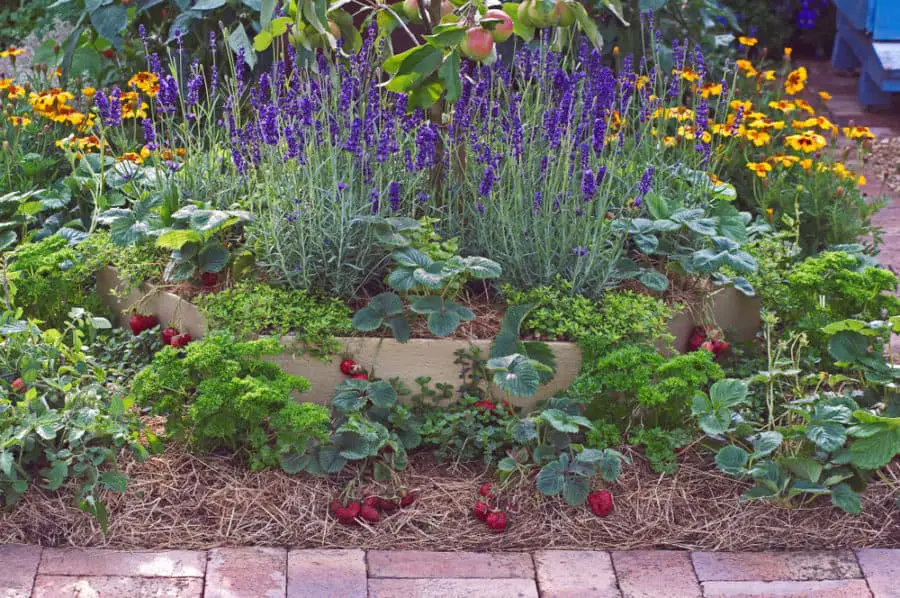
You can also border your landscape with fruits and vegetables that will add color, fragrance, and vibrancy to your yard – and that’s not all; adding these fruits and vegetables means that you can enjoy a delicious harvest all summer long.
Gabions Landscape Border:
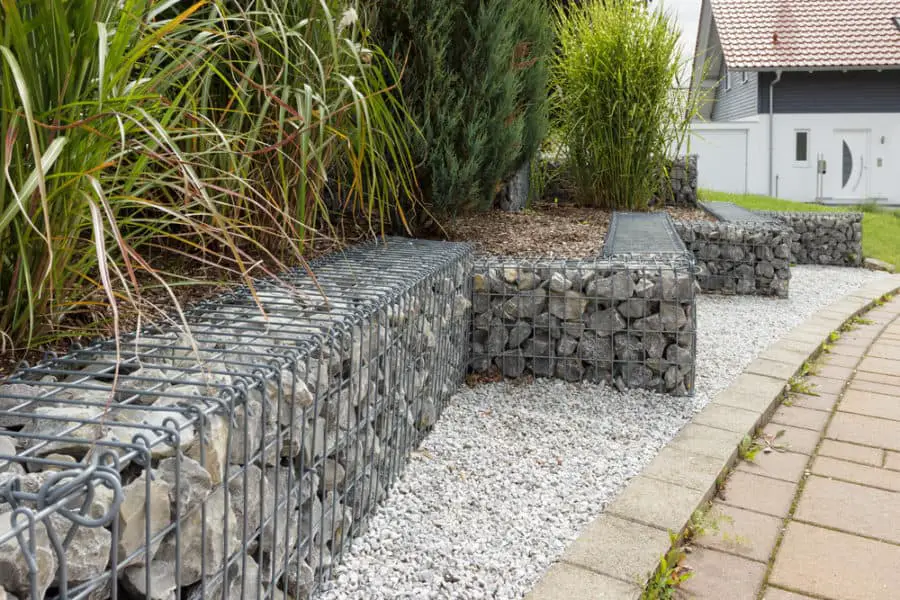
This gabion garden border acts as a retaining wall that holds the plants and soil in place. It looks structured, yet so natural that it blends in perfectly with the natural surrounding. It’s also quite sturdy.This type of raised landscape edging can help to give your yard a hip, modern look.
Crushed Rock Filling Landscape Border:

This particular border made of crushed rocks contrasts well with the brick. The short height of the stone and sudden change of color depict a clear boundary. This is another modern-looking landscape border, and its muted tone ensures that it will match well with just about any type of garden or yard.
Timber Landscape Border:
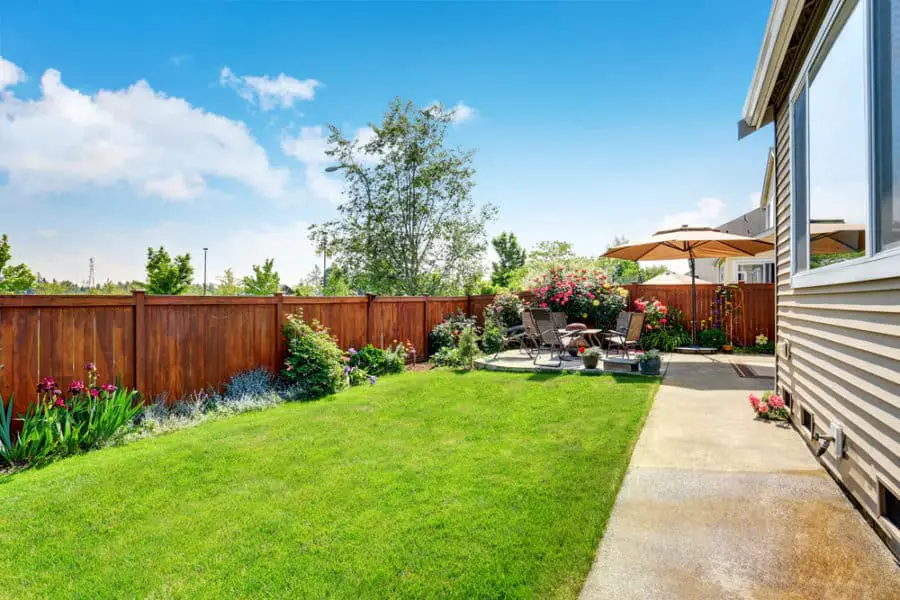
Timber fences create an attractive and natural-looking border around lawns. If you decide to go with such a wooden border, it’s important that all the timbers are pressure-treated to prevent early rotting. Timber edging is quite rustic and pleasant to look at, but it is definitely not one of the cheapest options out there, especially if you need to hire a skilled carpenter to achieve this look.
Natural Stone Retaining Wall:
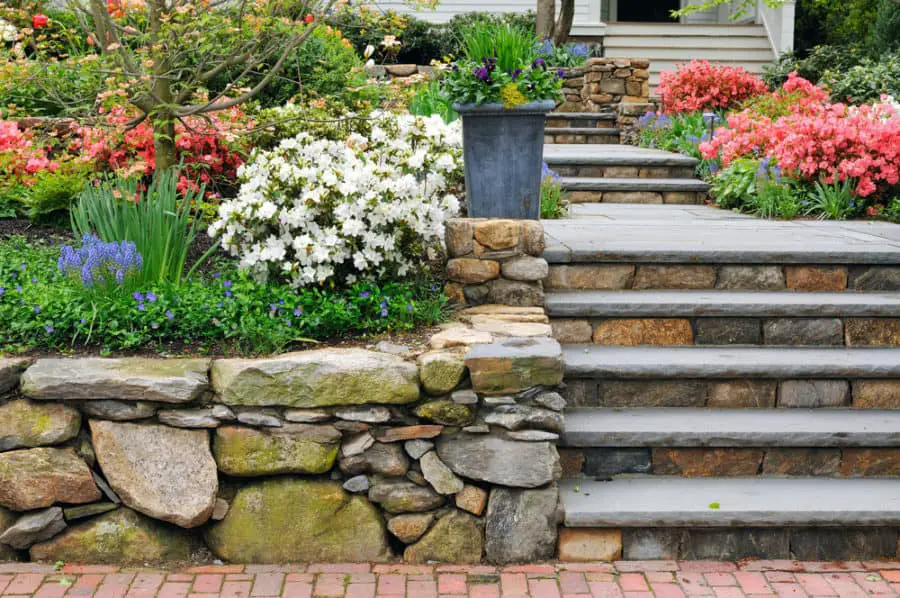
The natural stone creates a beautiful border, which also acts as a retaining wall. It also complements the flagstone walls of a home nicely. Another traditional, rustic look for your garden, and can be raised as much as you want.
Wrap Up
A landscape border serves many purposes, such as defining a flower bed or shrub bed, and the transition from a patio to the adjacent garden. You can use different kinds of materials for your landscape border; ranging from wood to rocks and bricks. The type of material you choose will determine the look of the border and your overall yard.
If you’re looking for a natural look, you should use materials like wood, mulch, plants, and flowers. Alternatively, if you want a simulated look, then materials like plastic and brick are a better option.
Ultimately, the choice you make will come down to your individual circumstances, preferences, and budget. Take a while to think of how you truly want your outdoor space to look. From there, evaluate how much you are willing to spend, and whether or not you require a professional or are looking for a DIY project. Rest assured, there is a landscape border option out there that will definitely improve the look and feel of your yard.
We hope you enjoyed our picks for the best landscape border ideas for your backyard!
Interested in backyard design? Check out our Pool Landscaping Ideas, 70 Backyard Design Ideas, Garden Fence Ideas, and Brick Patio Ideas articles!